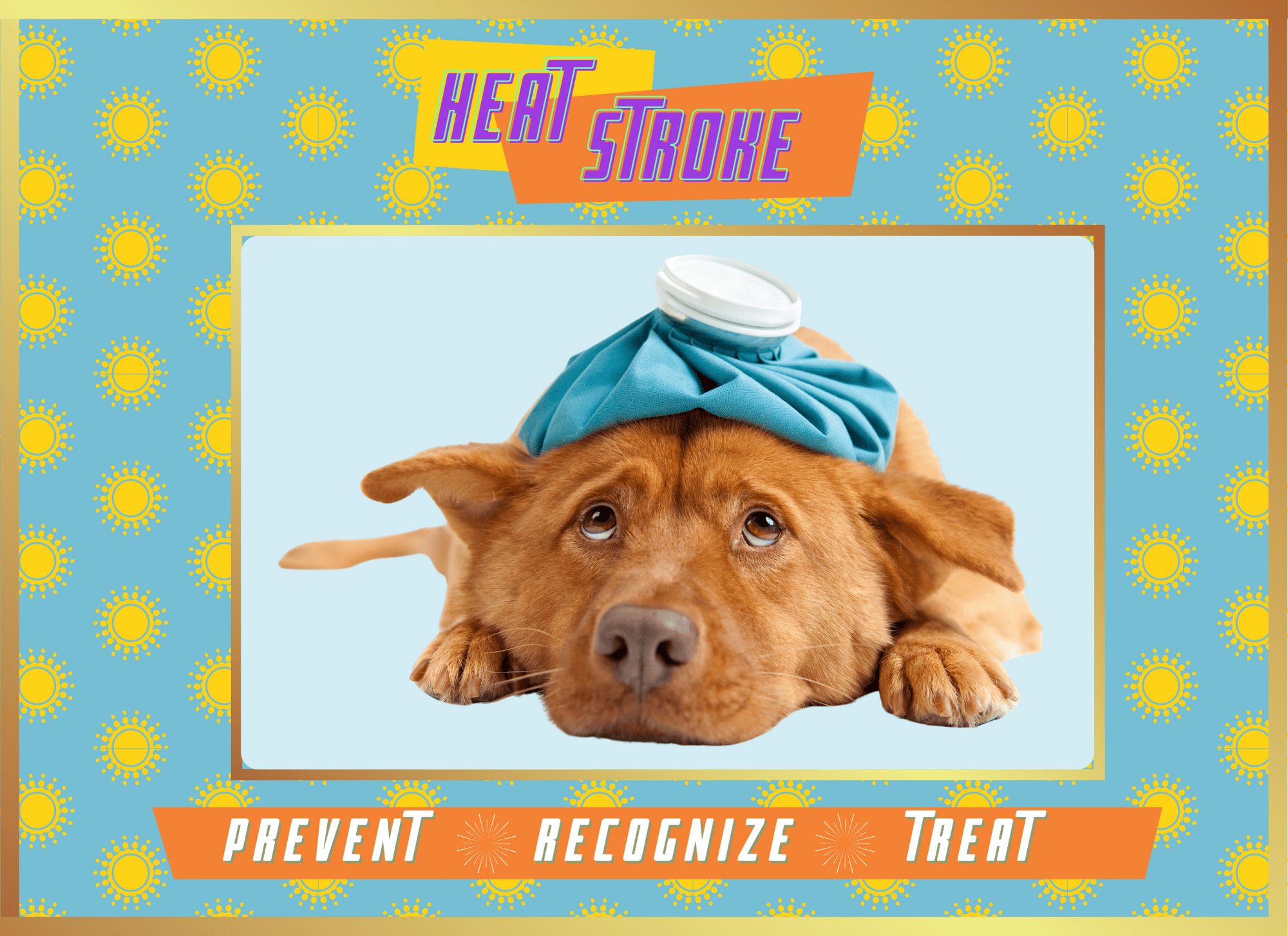With the mid-summer heat waves reaching new extremes, the risk of heat stroke in dogs is on the rise. Heat stroke is defined as a body temperature exceeding 105.8 and is due to an inability to effectively dissipate heat.
There are 3 main types of dog heat stroke: the first is what we think of as “classic” heat stroke, meaning that an animal is exposed to an excessively hot and humid environment.
The second type of heat stroke is called exertional heat stroke, which can occur due to excessive exercise, regardless of the ambient temperature. Example for the dog park– throwing the tennis ball too many times for your pooch! Even though your dog may act like they want it, please take it easy when it’s hot.
Finally, heat stroke can occur due to secondary causes, such as uncontrolled seizures or tremors.
All dogs (and all animals, for that matter) are at risk of developing heat stroke depending on external factors, such as the heat index that day or being left in a hot car.
However, some dogs are at a higher risk of heat stroke than others, including:
- Large breed dogs with thick hair coats
- Obese dogs
- Brachycephalic or “smush faced” breeds such as Frenchies and English Bulldogs
- Dogs with pre-existing respiratory disease
SYMPTOMS, Outcome and treatment OF HEAT STROKE IN DOGS
Clinical signs of heat stroke in dogs include:
- Collapse, labored breathing or excessive panting
- Dull mentation
- Vomiting or diarrhea (either of which may be bloody)
- Signs of bleeding, such as bruising on the skin or gums
Heat stroke varies in severity and can affect multiple organ systems, causing damage to the gastrointestinal system, kidneys, heart and lungs, and brain. It also severely impacts the body’s hemostatic system, causing prolonged clotting times and leading to hemorrhage.
Dog heat stroke is treated with aggressive supportive care, including:
- Fluid therapy
- Plasma transfusions to control bleeding
- Blood pressure support
- Gastroprotectants
- Sometimes antibiotics if there is bacterial translocation from the intestinal tract
- Anti-seizure medications if seizures are noted
The prognosis of heat stroke is variable and depends on the severity. In some cases, it is unfortunately fatal, regardless of treatment.
WHAT SHOULD I DO IF I THINK MY DOG HAS HEAT STROKE?
If you are worried that your dog is experiencing heat stroke, the best course of action is to hose your dog down with cool or tepid water and turn on the air conditioning in your car while on the way into a veterinary hospital.
Call the veterinarian’s office right away so they are prepared for your arrival.
Do not use alcohol to soak your dog; not only is it noxious to animals, but also poses a fire hazard if defibrillation is required.
HOW DO I PREVENT MY DOG FROM GETTING HEAT STROKE?
Heat stroke can be prevented by taking careful precautions:
- DON’T EXPOSE DOGS TO EXTREME TEMPERATURES
- DON’T LEAVE YOUR DOG IN A HOT CAR
- TAKE WALKS EARLY IN THE MORNING
- HAVE PLENTY OF COLD WATER EASILY ACCESSIBLE
- DON’T THROW THE BALL CONSTANTLY
Make sure your dogs have plenty of water, and if they are out in the middle of the day, make sure they have somewhere they can swim and cool down.
When your dogs are at Poochie’s, their health is the number one priority for us. We have many ways to keep dogs cool and, in the summer, outings are shorter, but they occur twice as much. Staff is trained and hounded every day by managers to watch dogs that could become too hot. If any dog looks like he’s too hot, then they are seen by our wonderful Vets next door within only a couple minutes. We take the heat and dog play very seriously and we hope you all do too. Thanks for reading.

